 W
WAlpha-taxilin also known as interleukin-14 (IL-14) or high molecular weight B-cell growth factor (HMW-BCGF) is a protein that in humans is encoded by the TXLNA gene.
 W
WInterleukin 1 alpha (IL-1α) also known as hematopoietin 1 is a cytokine of the interleukin 1 family that in humans is encoded by the IL1A gene. In general, Interleukin 1 is responsible for the production of inflammation, as well as the promotion of fever and sepsis. IL-1α inhibitors are being developed to interrupt those processes and treat diseases.
 W
WInterleukin 1 beta (IL-1β) also known as leukocytic pyrogen, leukocytic endogenous mediator, mononuclear cell factor, lymphocyte activating factor and other names, is a cytokine protein that in humans is encoded by the IL1B gene. There are two genes for interleukin-1 (IL-1): IL-1 alpha and IL-1 beta. IL-1β precursor is cleaved by cytosolic caspase 1 to form mature IL-1β.
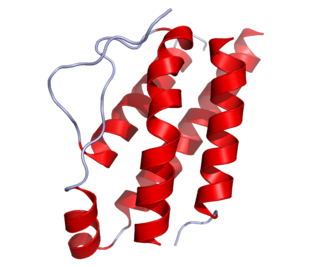 W
WInterleukin-2 (IL-2) is an interleukin, a type of cytokine signaling molecule in the immune system. It is a 15.5–16 kDa protein that regulates the activities of white blood cells (leukocytes, often lymphocytes) that are responsible for immunity. IL-2 is part of the body's natural response to microbial infection, and in discriminating between foreign ("non-self") and "self". IL-2 mediates its effects by binding to IL-2 receptors, which are expressed by lymphocytes. The major sources of IL-2 are activated CD4+ T cells and activated CD8+ T cells.
 W
WInterleukin 3 (IL-3) is a protein that in humans is encoded by the IL3 gene localised on chromosome 5q31.1.
 W
WThe interleukin 4 is a cytokine that induces differentiation of naive helper T cells to Th2 cells. Upon activation by IL-4, Th2 cells subsequently produce additional IL-4 in a positive feedback loop. IL-4 is produced primarily by mast cells, Th2 cells, eosinophils and basophils. It is closely related and has functions similar to interleukin 13.
 W
WInterleukin 5 (IL5) is an interleukin produced by type-2 T helper cells and mast cells.
 W
WInterleukin 6 (IL-6) is an interleukin that acts as both a pro-inflammatory cytokine and an anti-inflammatory myokine. In humans, it is encoded by the IL6 gene.
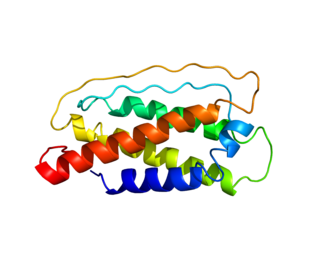 W
WInterleukin 7 (IL-7) is a protein that in humans is encoded by the IL7 gene.
 W
WInterleukin 9, also known as IL-9, is a pleiotropic cytokine belonging to the group of interleukins. IL-9 is produced by variety of cells like mast cells, NKT cells, Th2, Th17, Treg, ILC2, and Th9 cells in different amounts. Among them, Th9 cells are regarded as the major CD4+ T cells that produce IL-9.
 W
WInterleukin 10 (IL-10), also known as human cytokine synthesis inhibitory factor (CSIF), is an anti-inflammatory cytokine. In humans, interleukin 10 is encoded by the IL10 gene. IL-10 signals through a receptor complex consisting of two IL-10 receptor-1 and two IL-10 receptor-2 proteins. Consequently, the functional receptor consists of four IL-10 receptor molecules. IL-10 binding induces STAT3 signalling via the phosphorylation of the cytoplasmic tails of IL-10 receptor 1 + IL-10 receptor 2 by JAK1 and Tyk2 respectively.
 W
WInterleukin 11 (IL-11) is a protein that in humans is encoded by the IL11 gene.
 W
WInterleukin 12 (IL-12) is an interleukin that is naturally produced by dendritic cells, macrophages, neutrophils, and human B-lymphoblastoid cells (NC-37) in response to antigenic stimulation. IL-12 belongs to the family of interleukin-12. IL-12 family is unique in comprising the only heterodimeric cytokines, which includes IL-12, IL-23, IL-27 and IL-35. Despite sharing many structural features and molecular partners, they mediate surprisingly diverse functional effects.
 W
WInterleukin 13 (IL-13) is a protein that in humans is encoded by the IL13 gene. IL-13 was first cloned in 1993 and is located on chromosome 5q31 with a length of 1.4kb. It has a mass of 13 kDa and folds into 4 alpha helical bundles. The secondary structural features of IL-13 are similar to that of Interleukin 4 (IL-4); however it only has 25% sequence homology to IL-4 and is capable of IL-4 independent signaling. IL-13 is a cytokine secreted by T helper type 2 (Th2) cells, CD4 cells, natural killer T cell, mast cells, basophils, eosinophils and nuocytes. Interleukin-13 is a central regulator in IgE synthesis, goblet cell hyperplasia, mucus hypersecretion, airway hyperresponsiveness, fibrosis and chitinase up-regulation. It is a mediator of allergic inflammation and different diseases including asthma.
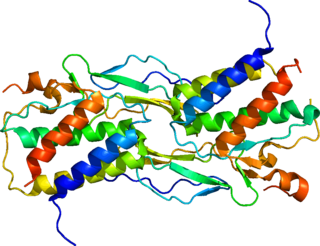 W
WInterleukin-15 (IL-15) is a cytokine with structural similarity to Interleukin-2 (IL-2). Like IL-2, IL-15 binds to and signals through a complex composed of IL-2/IL-15 receptor beta chain (CD122) and the common gamma chain. IL-15 is secreted by mononuclear phagocytes following infection by virus(es). This cytokine induces the proliferation of natural killer cells, i.e. cells of the innate immune system whose principal role is to kill virally infected cells.
 W
WPro-interleukin-16 is a protein that in humans is encoded by the IL16 gene. This gene was discovered in 1982 at Boston University by Dr. David Center and Dr. William Cruikshank.
 W
WInterleukin 17A is a pro-inflammatory cytokine. This cytokine is produced by a group of T helper cell known as T helper 17 cell in response to their stimulation with IL-23. Originally, Th17 was identified in 1993 by Rouvier et al. who isolated IL17 transcript from a rodent T-cell hybridoma. The protein encoded by IL17A is a founding member of IL-17 family. IL17 protein exhibits a high homology with a viral IL-17-like protein encoded in the genome of T-lymphotropic rhadinovirus Herpesvirus saimiri. In rodents, IL-17 is often referred to as CTLA8.
 W
WInterleukin-18 is a protein which in humans is encoded by the IL18 gene. The protein encoded by this gene is a proinflammatory cytokine. Many cell types, both hematopoietic cells and non-hematopoietic cells, have the potential to produce IL-18. It was first described in 1989 as a factor that induced interferon-γ (IFN-γ) production in mouse spleen cells. Originally, IL-18 production was recognized in Kupffer cells, liver-resident macrophages. However, IL-18 is constitutively expressed in non-hematopoietic cells, such as intestinal epithelial cells, keratinocytes, and endothelial cells. IL-18 can modulate both innate and adaptive immunity and its dysregulation can cause autoimmune or inflammatory diseases.
 W
WInterleukin 19 (IL19) is a protein that in humans is encoded by the IL19 gene on the chromosome 1.
 W
WInterleukin 20 (IL20) is a protein that in humans is encoded by the IL20 gene. Interkeukin 20 also includes other cytokines, including IL-19, IL-20, IL-22, IL-24, and IL-26. Based on common structural and functional properties of IL-20's receptors and target cells, these cytokines constitute the same subfamily, IL-20.
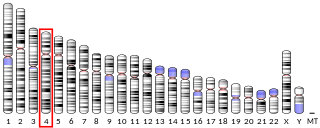 W
WInterleukin 21 (IL-21) is a protein that in humans is encoded by the IL21 gene.
 W
WInterleukin-22 (IL-22) is protein that in humans is encoded by the IL22 gene.
 W
WInterleukin-23 (IL-23) is a heterodimeric cytokine composed of an IL12B (IL-12p40) subunit and the IL23A (IL-23p19) subunit. IL-23 is part of IL-12 family of cytokines. A functional receptor for IL-23 has been identified and is composed of IL-12R β1 and IL-23R. Adnectin-2 is binding to IL-23 and compete with IL-23/IL-23R. mRNA of IL-23R is 2,8 kB in length and includes 12 exons. The translated protein contains 629 amino acids, which is a type I penetrating protein includes signal peptide, an N-terminal fibronectin III-like domain and an intracellular part contains 3 potential tyrosine phosphorylation domains. There are 24 variants of splicing of IL-23R in mitogen-activated lymphocytes. IL-23R has some single nucleotide polymorphisms in the domain of binding IL-23 so there can be differences in activation of Th17. There is also variant of IL-23R which has just extracellular part and it´s known as soluble IL-23R. This form can compete with membrane form to bind IL-23 and there can be difference in activation of Th17 immune response and regulation of inflammation and immune function.
 W
WInterleukin-23 subunit alpha is a protein that in humans is encoded by the IL23A gene. IL-23 is produced by dendritic cells and macrophages.
 W
WInterleukin 24 (IL-24) is a protein in the interleukin family, a type of cytokine signaling molecule in the immune system. In humans, this protein is encoded by the IL24 gene.
 W
WInterleukin-25 (IL-25) – also known as interleukin-17E (IL-17E) – is a protein that in humans is encoded by the IL25 gene on chromosome 14. IL-25 was discovered in 2001 and is made up of 177 amino acids.
 W
WInterleukin-26 (IL-26) is a protein that in humans is encoded by the IL26 gene.
 W
WInterleukin-29 (IL-29) is a cytokine and it belongs to type III interferons group, also termed interferons λ (INF-λ). IL-29 plays an important role in the immune response against pathogenes and especially against viruses by mechanisms similar to type I interferons, but targeting primarily cells of epithelial origin and hepatocytes.
 W
WInterleukin 30 (IL-30) forms one chain of the heterodimeric cytokine called interleukin 27 (IL-27), thus it is also called IL27-p28. IL-27 is composed of α chain p28 and β chain Epstain-Barr induce gene-3 (EBI3). The p28 subunit, or IL-30, has an important role as a part of IL-27, but it can be secreted as a separate monomer and has its own functions in the absence of EBI3. The discovery of IL-30 as individual cytokine is relatively new and thus its role in the modulation of the immune response is not fully understood.
 W
WInterleukin-31 (IL-31) is a protein that in humans is encoded by the IL31 gene that resides on chromosome 12. IL-31 is an inflammatory cytokine that helps trigger cell-mediated immunity against pathogens. It has also been identified as a major player in a number of chronic inflammatory diseases, including atopic dermatitis.
 W
WInterleukin 32 (IL32) is proinflammatory cytokine that in humans is encoded by the IL32 gene. Interleukin 32 can be found in higher mammals but not in rodents. It is mainly expressed intracellularly and the protein has nine different isoforms, because the pre-mRNA can be alternatively spliced.The most active and studied isoform is IL-32γ. It was first reported in 2005, although the IL-32 gene was first described in 1992. It does not belong to any cytokine family because there is almost no homology with other cytokines.
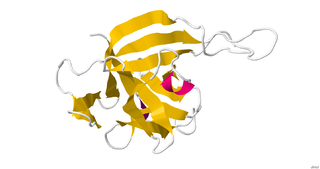 W
WInterleukin 33 (IL-33) is a protein that in humans is encoded by the IL33 gene.
 W
WInterleukin 34 (IL-34) is a protein belonging to a group of cytokines called interleukins. It was originally identified in humans, by large scale screening of secreted proteins; chimpanzee, murine, rat and chicken interleukin 34 orthologs have also been found. The protein is composed of 241 amino acids, 39 kilodaltons in mass, and forms homodimers. IL-34 increases growth or survival of immune cells known as monocytes; it elicits its activity by binding the Colony stimulating factor 1 receptor.
 W
WThe Interleukin-1 family is a group of 11 cytokines that plays a central role in the regulation of immune and inflammatory responses to infections or sterile insults.
 W
WSubunit beta of interleukin 12 is a protein that in humans is encoded by the IL12B gene. IL-12B is a common subunit of interleukin 12 and Interleukin 23.